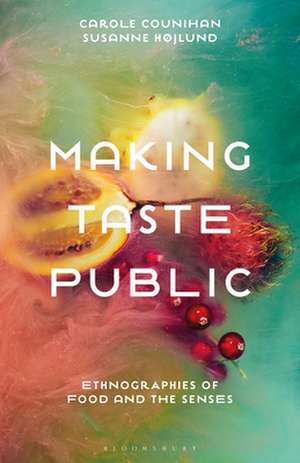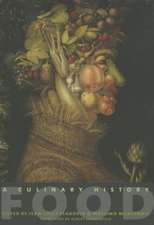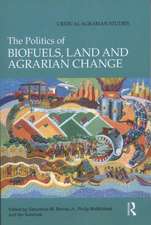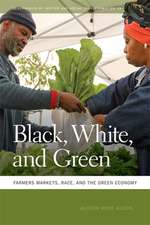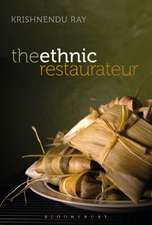Making Taste Public: Ethnographies of Food and the Senses
Editat de Prof Carole Counihan, Susanne Højlunden Limba Engleză Paperback – 19 feb 2020
| Toate formatele și edițiile | Preț | Express |
|---|---|---|
| Paperback (1) | 223.93 lei 43-57 zile | |
| Bloomsbury Publishing – 19 feb 2020 | 223.93 lei 43-57 zile | |
| Hardback (1) | 715.00 lei 43-57 zile | |
| Bloomsbury Publishing – 8 aug 2018 | 715.00 lei 43-57 zile |
Preț: 223.93 lei
Preț vechi: 288.46 lei
-22% Nou
Puncte Express: 336
Preț estimativ în valută:
42.85€ • 44.86$ • 35.45£
42.85€ • 44.86$ • 35.45£
Carte tipărită la comandă
Livrare economică 07-21 aprilie
Preluare comenzi: 021 569.72.76
Specificații
ISBN-13: 9781350152083
ISBN-10: 1350152080
Pagini: 232
Dimensiuni: 156 x 234 x 17 mm
Greutate: 0.33 kg
Editura: Bloomsbury Publishing
Colecția Bloomsbury Academic
Locul publicării:London, United Kingdom
ISBN-10: 1350152080
Pagini: 232
Dimensiuni: 156 x 234 x 17 mm
Greutate: 0.33 kg
Editura: Bloomsbury Publishing
Colecția Bloomsbury Academic
Locul publicării:London, United Kingdom
Caracteristici
Carole Counihan has spear-led the anthropological examination of taste, and is established and well-respected. Her influence on this book, and name on the cover, will be an asset
Notă biografică
Carole Counihan is Professor Emerita of Anthropology at Millersville University, USA. She is also Editor-in-Chief of the Food and Foodways journal. Susanne Højlund is Associate Professor in Anthropology at Aarhus University, Denmark.
Cuprins
List of images List of Contributors Preface, Carole Counihan (Millersville University, USA) and Susanne Højlund (Aarhus University, Denmark) Foreword, David Sutton (Southern Illinois University Carbondale, USA) Introduction 1. Making Taste Public: An Ethnographic Approach, Carole Counihan (Millersville University, USA) and Susanne Højlund (Aarhus University, Denmark) Part One: Taste Socialization: Family and Culture 2. Taste, Socialization, and Infancy, Penny Van Esterik (York University, Canada) 3. The Taste of Intervention: Tasting, Eating and Feeding After Weight Loss Surgery, Line Hillersdal (University of Copenhagen, Denmark) and Bodil Just Christensen (University of Copenhagen, Denmark) 4. The Taste of Reef: Changing Food Preferences and Taste in a Solomon Island Archipelago Over Forty years, Peter I. Crawford (UiT The Arctic University of Norway, Norway) Part Two: Taste, Place, and Intersubjectivity 5. How to Taste Like a Cow: Cultivating Shared Sense in Wisconsin Dairy Worlds, Katy Overstreet (University of California Santa Cruz, USA and Aarhus University, Denmark) 6. Cultivating a Taste Landscape: Cooperative Winegrowing in Carema, Italy, Rachel Black (Connecticut College, USA) 7. Tasting Comté Cheese, Returning to the Whole: The Jury Terroir as Ritual Practice, Christy Shields (The American University of Paris, France) Part Three: Taste Education and Sharing: Identity and Community 8. "Listen! We Made these Potatoes Crispy!" Danish Adolescents Sharing Taste in a School Class, Susanne Højlund (Aarhus University, Denmark) 9. Making the Multi-Dimensional Taste of Japanese Cuisine Public, Greg De St. Maurice (University of Toronto, Canada and l'École des Hautes Études en Sciences Sociales, France) 10. Sharing and Transmitting Taste in a Professional Danish Restaurant Kitchen, Jens Sejer Østergaard Rasmussen (Independent Scholar) 11. Teaching to Cook and Learning to Sense in Food Education, Amy Trubek and Maria Carabello (University of Michigan, USA) Part Four: Taste Politics 12. Taste Activism in Urban Sardinia, Italy, Carole Counihan (Millersville University, USA) 13. Reindeer Fat and the Taste of Place in Sámi Food Activism, Amanda Green (Davidson College, USA) 14. Political Taste: Inclusion and Exclusion in the Slow Food Movement, Valeria Siniscalchi (École des Hautes Études en Sciences Sociales, France) 15. Tasting Displacement, Reflections on Freshness, Joan Gross (Oregon State University, USA) Index
Recenzii
[L]inking the individual to the collective is an overarching topic addressed in the fifteen chapters in Making Taste Public, edited by anthropologists Carole Counihan and Susanne Højlund. Drawing from the scholars' rich ethnographic case studies from Denmark, the Solomon Islands, Italy, France, Japan, and Sweden, the broad question of "how does taste become part of the culture?" (1) is explored.
A vitally important part of culture, taste has been a peculiar blind spot in social science and food studies. These original contributions by many of today's best food scholars is part of a renewed interest in human senses. With vivid case studies, it reveals the crucial importance of taste as a connection between individuals, cultures, and the complexities of everyday life.
If you not before were convinced that taste is a social and public matter that takes place between people, you will be after having read this remarkable and timely book. Its message is as necessary as it is obvious.
Preferences for food and drink are frequently regarded as private to individuals or, more generously, determined within families or ethnic groups. This collection demonstrates how taste is actively public, detailing examples of how place, community, and education affect taste choices and experiences-all timely matters for our changing global societies.
A great project. Just what is needed in food studies - and sensory studies - at this juncture.
This is an excellent project. It is the book that all of us who are interested in the cultural and social aspects of food and food experience have been waiting for, for a very long time.
Counihan and Højlund have produced a landmark volume that advances the field of Food Studies while remaining highly accessible to students. The essays use taste to rethink wider food cultures and systems, answering critical questions about identity, health, justice, and sustainability.
A vitally important part of culture, taste has been a peculiar blind spot in social science and food studies. These original contributions by many of today's best food scholars is part of a renewed interest in human senses. With vivid case studies, it reveals the crucial importance of taste as a connection between individuals, cultures, and the complexities of everyday life.
If you not before were convinced that taste is a social and public matter that takes place between people, you will be after having read this remarkable and timely book. Its message is as necessary as it is obvious.
Preferences for food and drink are frequently regarded as private to individuals or, more generously, determined within families or ethnic groups. This collection demonstrates how taste is actively public, detailing examples of how place, community, and education affect taste choices and experiences-all timely matters for our changing global societies.
A great project. Just what is needed in food studies - and sensory studies - at this juncture.
This is an excellent project. It is the book that all of us who are interested in the cultural and social aspects of food and food experience have been waiting for, for a very long time.
Counihan and Højlund have produced a landmark volume that advances the field of Food Studies while remaining highly accessible to students. The essays use taste to rethink wider food cultures and systems, answering critical questions about identity, health, justice, and sustainability.
